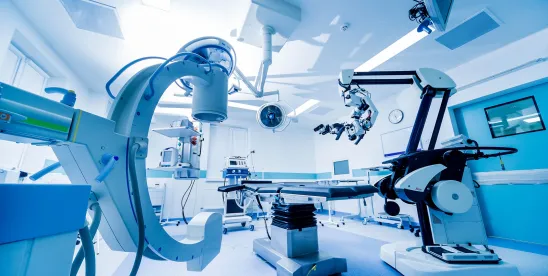As European medtech companies look to expand their presence in the U.S. market, understanding the intricacies of U.S. patent law becomes increasingly important. The U.S. market, being the largest for medical technologies, presents both opportunities and challenges. Many European companies may find that their current European-centric patent portfolio development strategy may not fully align with the expectations and requirements of U.S. investors, strategics, or other potential acquirers, nor align with U.S. patent practice in front of the U.S. Patent and Trademark Office (USPTO) or U.S. patent law.
Different Types of Claims or Technologies Patentable in the U.S. Relative to Europe
For instance, in Europe, method of treatment claims are not considered patent eligible, whereas the same method of treatment claims are patent eligible in the United States. As such, it is common to see patent applications prepared by European patent counsel that do not include method of treatment claims. Such patent applications, when submitted to the USPTO, do not include important claims directed towards the method of treatment that otherwise would be included in a patent application prepared by sophisticated U.S. counsel. Moreover, the United States has a more liberal or generous stance on patents related to software technologies, including software for detecting medical conditions, classification of patients, among others relative to Europe. In such cases, European medtech companies that utilize European patent counsel often choose not to file software-related patents, again missing the opportunity to obtain patents that would otherwise be valuable in the United States.
U.S. Filing of Continuation Applications
Not only are different types of claims or technologies patentable in the United States relative to Europe, but the United States also encourages the filing of continuation applications that allow a company to pursue additional claims by essentially refiling the original patent filing. In this way, the same original patent application can have multiple granted patents with different claims, providing the company with a much broader scope of protection than the company would otherwise achieve with only a single patent. And by refiling applications as continuations, the company can monitor competitors and pursue different claims that cover the competitors’ products if they tried to circumvent the company’s granted patents.
Differing Patent Procedural Requirements
Moreover, patent procedural requirements differ between the United States and Europe. For instance, the European Patent Office (EPO) charges additional page count fees after 30 pages, compared to the USPTO, which charges additional page count fees after 125 pages. The effect of the page count difference is that European patent applications are drafted with the goal to very efficiently describe one single invention, while U.S. patent applications are drafted with the goal to capture multiple inventions and also describe various design arounds to those inventions to also enable pursuing continuation applications directed towards the additional inventions or design arounds.
Limitations in Reliance Upon Foreign Associates
Due to the varying laws and procedures across different jurisdictions, as well as the licensing requirements across different jurisdictions, a company’s outside patent counsel works with foreign associates to manage the company’s patent assets in each jurisdiction. However, foreign associates act merely as agents for the outside patent counsel, rather than providing strategic advice specific to that jurisdiction. This dynamic occurs due to a variety of reasons but primarily because the foreign associate may not fully appreciate the company’s overall strategy and may have a general risk aversion in challenging the instructions of the outside patent counsel, thereby compromising the quality of the patent assets in foreign jurisdictions.
Appeal to U.S. Investors
The U.S. market holds particular significance for most European medtech companies. As the largest market for medical technologies, it often serves as the ultimate destination for companies seeking to expand their reach. Additionally, U.S. investors are highly sought after due to their familiarity with the U.S. market and their ability to provide strategic value to companies navigating the U.S. health care landscape.
Before committing capital to an investment or acquisition, U.S. investors and acquirers conduct thorough intellectual property (IP) due diligence on target emerging medtech companies. These investors retain U.S. patent counsel to conduct IP due diligence to identify risks that help them evaluate whether or not to invest. In the realm of patents (as opposed to trademarks or other forms of intellectual property), they primarily assess whether the company’s products or offerings infringe any third-party patents and whether the company’s own products and offerings are patented to ensure that others cannot copy or easily design around them.
Risks Resulting from a Lack of U.S. Patent Strategy
Unfortunately, many European medtech companies fail to approach patent portfolio development strategically, often spending more money than necessary without securing adequate protection or losing investors in the due diligence process. Common mistakes include those discussed above such as (1) failing to consolidate multiple inventions into single filings or covering alternative embodiments, and (2) a failure to pursue continuation filings in the U.S. that preserve the rights to pursue additional claims in the future.
Recommended Next Steps for European Medtech Companies
Patent law is a complex field that presents numerous challenges for companies, especially in the medtech sector. This complexity arises not only from the intricate technologies involved but also from the varying laws and procedures across different jurisdictions. As European medtech companies develop their patent portfolio, they should keep the factors outlined above in mind and make sure they are well versed in U.S. patent practice. This will best position them to get funded by U.S. investors and give them the best chance of success in the U.S. market.




 />i
/>i
